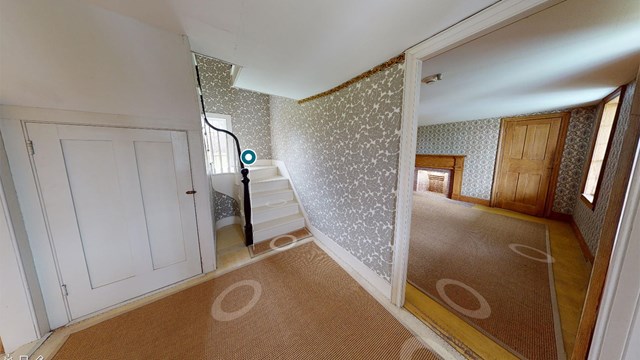
Library of Congress Early LifeElizabeth Cady was born in Johnstown, New York on November 12, 1815, the daughter of Daniel Cady, a lawyer, a judge, and land speculator, and Margaret Livingston Cady. Elizabeth was educated at a local boys school and graduated from the Troy Female Seminary in Troy, New York in 1832. In Seneca FallsWhen the Stantons finished with their London trip, they returned to Johnstown, where Henry studied law with Judge Cady. After Henry passed the bar exam, they set up housekeeping and started a family in Albany and then moved to Boston. Henry joined a law practice and they both became active in reform circles. They moved to Seneca Falls in 1847, as Henry was in poor health and needed a change. Elizabeth Cady Stanton’s father invited her and her family to live in a house he owned at 32 Washington Street. In June 1847, Daniel Cady transfered the deed to the property to his daughter. July, 1848This newfound understanding of women’s “proper sphere” led Stanton to complain vehemently to four other women friends about its injustice at a gathering held July 9, 1848, at the home of Jane and Richard Hunt. These four women (Lucretia Mott, Mary Ann M’Clintock, Martha Wright, and Jane Hunt – all wives and mothers) understood Stanton’s frustrations. Also, as active anti-slavery and temperance reformers, they had experienced discrimination by male coworkers. Together they decided to call a woman’s rights convention to publicly discuss these injustices against women. Lucretia Mott later reminded Stanton, “Remember, the first convention originated with thee.” The Original Convention DaysThe 1848 Women's Rights Convention
Library of Congress Alongside Susan B. AnthonyFor Elizabeth Cady Stanton, actually taking the first step to change her unhappy state made all the difference. She began to write, recruit, strategize, network, and organize for the cause of women’s rights. By 1859 her family responsibilities kept her at home with her husband and seven children to look after. Stanton managed to combine her public and private lives by opening her home to those who were free to travel and speak about advocating equal rights for women. She called her home “The Center of the Rebellion.” Later LifeElizabeth Cady Stanton was a determined advocate and unwavering voice for full rights of citizenship for women and nothing less. In 1862, the Stanton family moved to New York City, where Stanton continued to work for the women’s rights movement in the U.S. and abroad. She believed that the movement should work for a broad platform of change for women’s citizenship, including: woman suffrage, dress reform, girls’ sports, equal employment, property rights, equal wages, divorce and custody law reform, collective households, coeducation, and religious reform. 
Elizabeth Cady Stanton
Elizabeth Cady Stanton was a giant of the American women's rights movement from its inception in 1848. 
The Elizabeth Cady Stanton House
See the home where Elizabeth Cady Stanton helped start a movement. 
Stanton House Virtual Tour
Walk through Elizabeth Cady Stanton's house and learn about her life, family, and tireless work for women's rights. 
Declaration of Sentiments
Explore the revolutionary words of the Declaration of Sentiments, presented at the first Women's Rights Convention, July 19-20, 1848. 
Solitude of Self
Elizabeth Cady Stanton was a great orator. Read the speech SHE was most proud of and for which she is most remembered. |
Last updated: May 27, 2025
